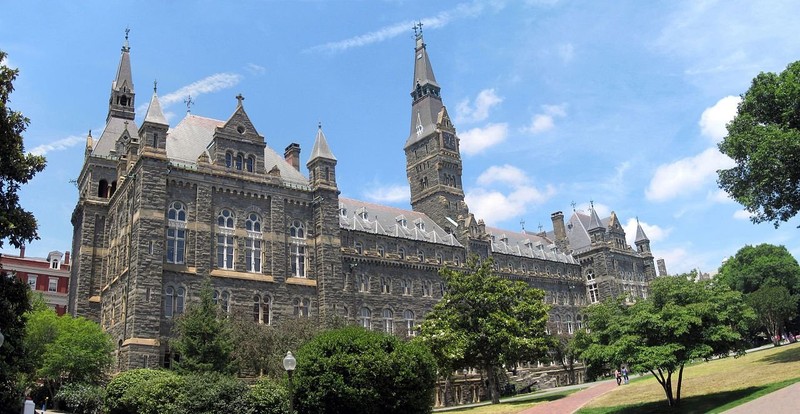Healy Hall, Georgetown University
Introduction
Text-to-speech Audio
Images
Healy Hall was named in honor of a Georgetown University President who was legally born into slavery and hid his racial identity.

Backstory and Context
Text-to-speech Audio
Patrick Healy was born into slavery as his mother, a light-skinned woman of African descent was owned by his father, a Georgia planter of Irish descent. Healy's parents lived as husband and wife and sent their son to New York where he was able to assume an identity as a white man. Healy graduated from Holy Cross College in Massachusetts and entered the Jesuit priesthood in 1850. Healy traveled throughout the United States and Europe and spoke many languages in addition to acquiring proficient knowledge in literature and philosophy. Healy was assigned to teach philosophy at the small but growing college in 1866 and served as the president of Georgetown 1873 to 1881. His mixed racial heritage was not known until historians discovered Healy's story in the 1960s.
Georgetown University, formerly known as Georgetown College (1789–1814) is the oldest Catholic educational institution in the United States. The college was founded in 1789 by John Carroll, America's first Catholic Bishop. Former President Bill Clinton, US Chief Justice Edward Douglass White, among many other prominent figures are Georgetown alumni. The university campus spans about 104 acres and includes numerous historic buildings.
The Civil War nearly resulted in the closure of Georgetown, as the student body dropped from 313 to 17 between 1859 and 1861. A total of 1,141 students and alumni enlisted in the war, serving in both the Union and Confederate forces. After the Second Battle of Bull Run in 1862, several campus buildings were turned into a temporary hospital. To celebrate the end of the Civil War, Georgetown students selected the colors blue (Union) and gray (Confederate) as the school’s official colors in 1876.
Georgetown's athletic teams, nicknamed the Hoyas, include a men's basketball team that has won seven Big East championships, appeared in five Final Fours, and won a national championship in 1984. Campus organizations include the country's largest student-run business and largest student-run financial institution.
Sources
Janet Cooke, "G.U. Honors Memory Of Patrick Healy, Pioneer in Education." Washington Post, March 13, 1980.
